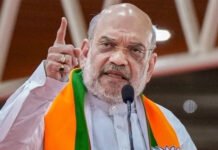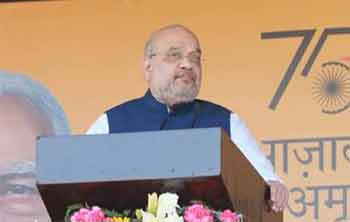Patna, November 6 — The high-stakes Bihar Assembly Elections 2025 officially kicked off today with Phase 1 voting across 121 constituencies, covering key regions in south and central Bihar. More than 3.75 crore voters are expected to cast their ballots, deciding the fate of 1,350 candidates in this crucial round of the three-phase election.
Polling began early in the morning under tight security arrangements, with personnel deployed from the Central Armed Police Forces (CAPF) to ensure smooth and peaceful voting. Despite overcast skies and reports of mild rain in parts of Gaya, Aurangabad, and Nawada, voter enthusiasm remained high as long queues formed outside polling booths.
High Stakes for Political Heavyweights
This phase is seen as a litmus test for both the ruling NDA alliance, led by Chief Minister Nitish Kumar of the Janata Dal (United), and the opposition INDIA bloc, spearheaded by RJD leader Tejashwi Yadav.
For Nitish Kumar, seeking another term amid mixed reviews of his governance and shifting alliances, Phase 1 is critical to retain ground in traditional JD(U) strongholds. Meanwhile, Tejashwi Yadav has mounted an aggressive campaign focused on job creation and social welfare, seeking to reclaim the political space once dominated by his father, Lalu Prasad Yadav.
The BJP, contesting as part of the NDA, aims to maintain its urban and semi-urban vote base, while smaller regional outfits like HAM, VIP, and LJP (Ram Vilas) seek to make inroads in constituencies with significant Dalit and minority populations.
Constituencies in Focus
The first phase includes politically volatile districts such as Gaya, Aurangabad, Nawada, Jamui, Rohtas, and Kaimur, where issues like unemployment, farm distress, caste equations, and law and order dominate local discourse.
In Gaya Town, the contest between JD(U)’s Prem Kumar and RJD’s Mohammad Ghulam Sarwar has drawn intense attention, while Aurangabad sees a triangular fight involving BJP, RJD, and an independent candidate with strong local support.
Security and Administration
According to the Election Commission, over 42,000 polling stations have been set up for the first phase. Nearly 1.5 lakh security personnel are deployed to ensure peaceful conduct, with drone surveillance and live monitoring from control rooms in Patna and Delhi.
The state police have identified several “sensitive” and “hyper-sensitive” booths, particularly in Naxal-affected areas of Gaya and Aurangabad, where additional central forces have been stationed.
Officials also confirmed that webcasting is being done at over 20,000 polling stations to enhance transparency and security.
Weather Plays a Role
The India Meteorological Department (IMD) has issued alerts for light rainfall and cloudy conditions in parts of southern Bihar, potentially affecting turnout in early hours. However, weather conditions are expected to improve by afternoon.
Despite the drizzle, voters were seen arriving in large numbers, especially first-time voters, many of whom expressed excitement about shaping Bihar’s future. “We want jobs and better roads,” said Pooja Kumari, a 19-year-old college student voting in Nawada. “This is our time to bring change.”
Voter Turnout and Early Trends
As per initial reports, voter turnout by 11 AM stood at around 22%, with women voters showing strong participation in several rural areas. The Election Commission has urged citizens to come out in large numbers while maintaining peace and discipline.
Campaign Highlights and Rhetoric
The campaign leading up to Phase 1 saw heated exchanges between Nitish Kumar and Tejashwi Yadav, with the latter accusing the government of “betraying Bihar’s youth” and failing on the employment front. Nitish, in response, highlighted his government’s track record in education, infrastructure, and women’s empowerment.
The BJP, led by state president Samrat Choudhary, emphasized national security and development, urging voters to support a “double-engine government” for faster progress.
Next Phases and Counting
The second and third phases of voting are scheduled for November 9 and November 14, respectively. Counting of votes will take place on November 20, with results expected to shape the state’s political trajectory ahead of the 2026 Lok Sabha elections.
As polling continues, all eyes remain on turnout figures and whether the electorate’s mood signals continuity or change.
For now, Bihar stands at the crossroads — between political legacy and new aspirations.
















